Happy Binturong Day guys, and what better day is there to announce that our binturongs have had a baby! Everyone, meet Kali; she is our 7-week-old female binturong kit! She is currently being cared for by staff… I’ll tell you all about her story in a little bit, but firstly, let me introduce you to her parents and to the binturong species.
Binturongs
At Wingham, we have two adult binturongs that share their enclosure with the Asian short clawed otters in the new “little Himalaya” section of the park. Our male is called “Papa” and our female is called “Karna”, after “Papakarna”, which is the Nepalese word for popcorn due to the distinctive aroma that binturongs have.
Binturongs are also known as “bear-cats” as they look like a mix between a cat and a bear- quite odd-looking animals really! Despite belonging to the Carnivore group, these guys are not closely related to cats or bears, but rather civets and genets. They are also omnivores, feeding on small mammals, birds, fish, insects and fruits. Arguably, the main physical characteristic that you will notice when you see a binturong is their tail. Binturongs are one of only two carnivores that possess a prehensile tail which it uses as an extra limb when climbing and hanging from trees and branches
Interestingly, their tails are also used in communication and you can sometimes see Papa and Karna curled up or sitting with their tails intertwined with one another- a very sweet comforting behaviour seen in breeding individuals. By nature, binturongs are shy and can be active any time of the day although most commonly up and about at dawn/dusk- so you have probably seen our two snoozing the day away in their nice warm house.
In the wild, binturongs can be found across south and south east Asia, ranging from India and Nepal across to China and even on islands such as the Philippines and Sumatra. However, they are not a common sight and as such are listed as Vulnerable on the IUCN redlist. Deforestation and the illegal wildlife pet trade are the two biggest threats that binturongs face.
Love is in the air
When Papa and Karna first arrived with us last summer, they were super shy and very reluctant to show us much of their personalities. Once settled into their new homes, it was clear that they got on very well, spending a lot of time cuddled up together and playfighting outside in front of the otters.
In December 2018, we were very lucky to witness the pair mating. Now was the time to add a potential due date to our keeper calendar and add a few nest boxes ready for the new arrival.
Binturong gestation is around 91 days and females can also delay the implantation of the foetus in order to wait for favourable conditions. Like with our smooth coated otters, we have target trained our binturongs and we used photos of Karna’s abdomen to help us work out if our estimated due date for her was correct. Here are some of her pregnancy progress photos.
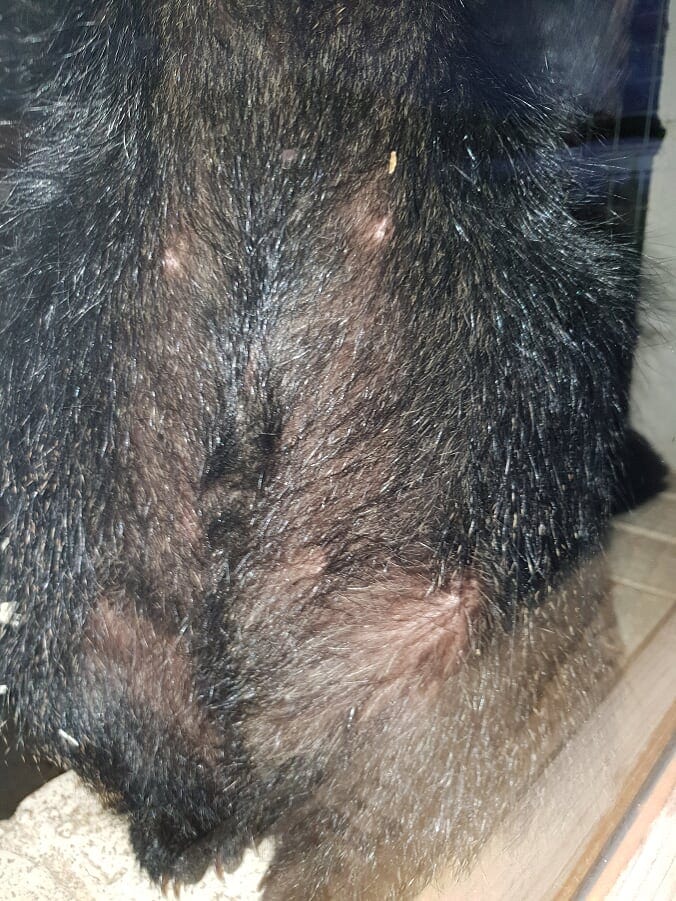
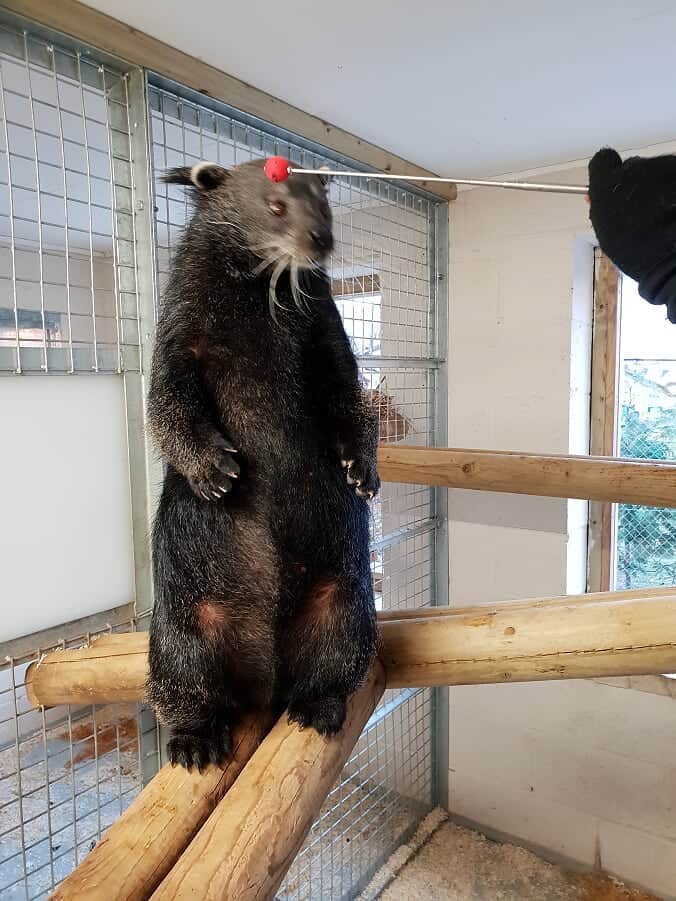
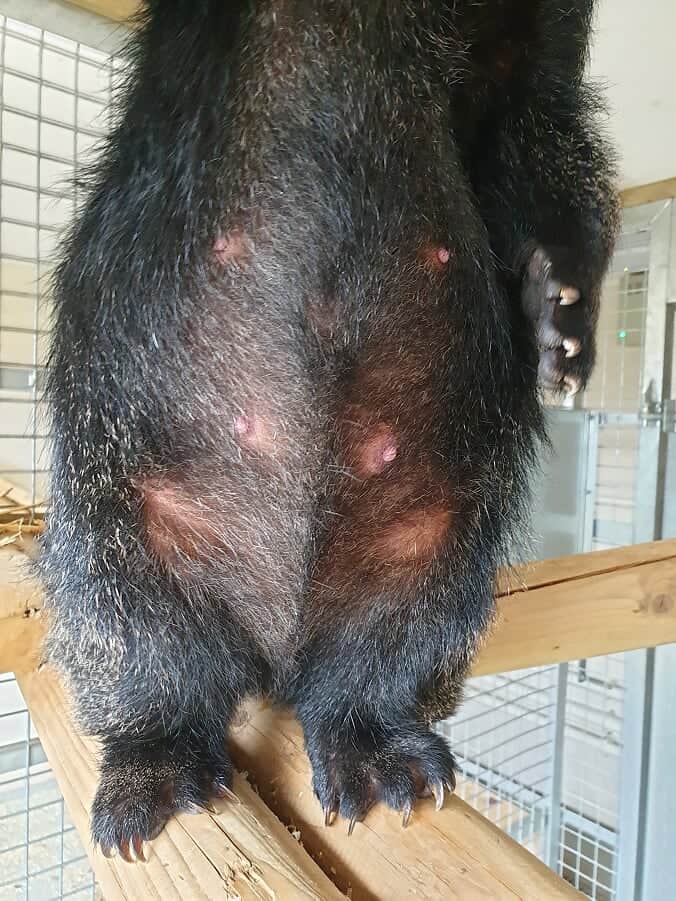
Two for Tuesday!
The due date we originally calculated from the December mating was March 17th. I was starting to think Karna’s weight gain could have been from her diet rather than any imminent babies arriving, but on the afternoon of Tuesday 19th March, it was noted that she seemed to be acting strangely, panting and cleaning herself a lot!
From around 4.30pm onwards it was clear that we were watching Karna going into labour. Being a first-time mum, we were all watching with bated breath in the hope that she’d be ok on her own. Sadly, that wasn’t the case.
After approximately half an hour of watching her push, we could see the baby was coming out tail-end first. While sometimes births can be straightforward with breached babies, Karna’s most certainly wasn’t. We gave her time in the hopes that she could birth the youngster on her own, but unfortunately, she couldn’t.
The vet was called out and after assessing the situation and her progress, the decision was made to take Karna to the surgery and give her a caesarean section- after all, we had no idea how many more she’d been cooking in that tummy!
I got the call at 7.30pm. Karna had given birth via C-section to two beautifully ugly binturong kits- 1 boy and 1 girl! Karna was fine and so were the youngsters
Once back at the park, the kits were introduced back to Karna in an attempt to get her to accept them so they could be raised by her as normal. However, due to having quite a stressful evening and understandably being in a little bit of pain following surgery, the introduction was not successful and the difficult decision to remove the youngsters was made.
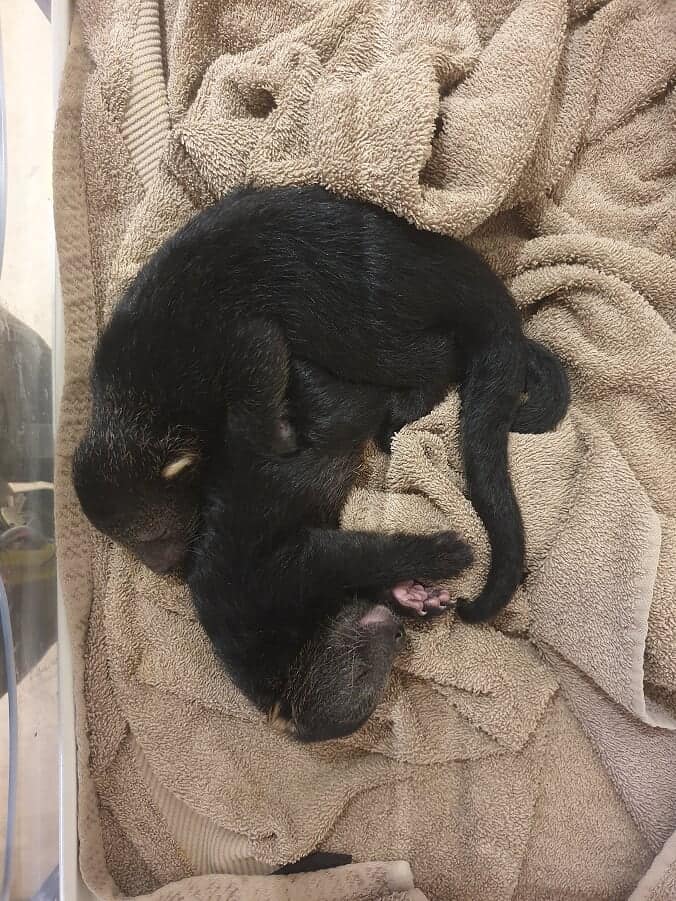
The morning after the night before
The decision to hand rear an animal is not one that is taken lightly in any responsible zoo. It is a big time commitment and there is always a risk that the baby may not survive. Thankfully here at Wingham, there is a host of hand rearing experience, so we hit the ground running with odds in our favour.
At birth, the two kits weighed 520g (female) and 490g (male)- average birth weights are between 200 -300g! The kits were put in an incubator for their first few days so that the temperature could be monitored and regulated. Both kits had their eyes open on day 1 too which I was quite surprised at, although their ears remained sealed.
Now, like I said, hand rearing is a commitment so you must do everything that their mum would do. This involved feeds every 2 hours day and night and making them go to the toilet (the less glamorous part). Initially, they were both lively, loud and (so!) cute- although it didn’t take long to notice that not only was the female larger but that she was also a lot more energetic than her brother.
After we got the first 3 critical days out of the way and we were sure they were both gaining weight each day, we decided to move them out of the incubator and name them. The female we called “Kali” after the Hindu goddess (it also is nepali for “black beauty”); the male we called “Tenzing” after the first Nepalese man to climb mount Everest in the Himalayas with Edmund Hillary.
7 days old
Whilst Kali was getting stronger and louder by the day, Tenzing unfortunately wasn’t. He had started to lose weight, had diarrhoea and quite often seemed to have a snotty nose. After seeing the vet, he was given a course of antibiotics and electrolytes in the hope that we could quickly rehydrate him.
Despite all our efforts, Tenzing sadly passed away on the 30th March.
During her brothers battle with a short illness, Kali had continued to improve and progress. However, she now started to lose weight and had diarrhoea too. Having already lost her brother, we didn’t want to take any chances with her.
2 weeks old
Kali was taken to the vets due to her diarrhoea and a sudden inability to suckle on the teat we were using. It’s important that baby animals create a seal around the teat when they are suckling as too much air gulped in can cause milk to come out of their nose – something we wanted to avoid. Kali was put on a course of antibiotics as a precaution, and we switched our feeding equipment from a syringe to a curved glass feeder tube with a larger teat, which was required given her growth over the last week.
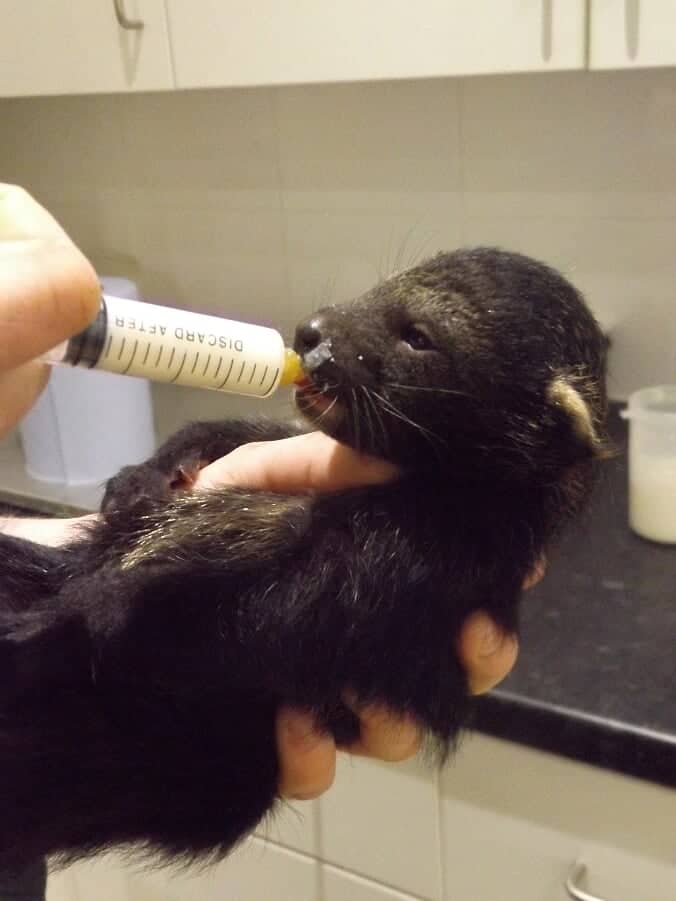
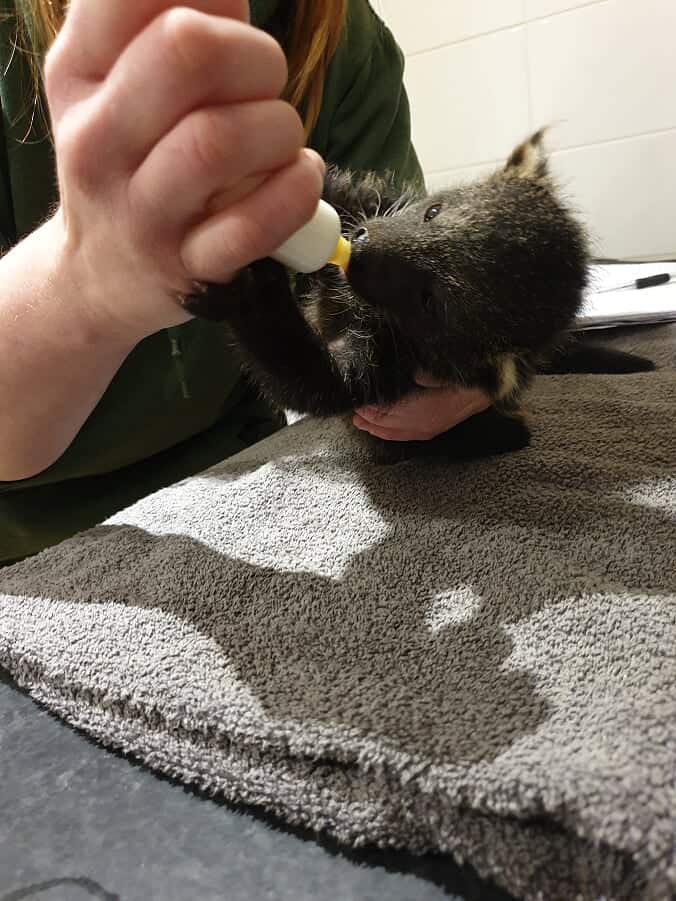
It didn’t take long to notice a difference. Not even 1 day had passed and she had started to gain weight again, poops were almost normal, and she seemed herself again. She even had her two front teeth start to erupt! Not only that, but she was beginning to use her fantastic tail to wrap around our hands and crate door.
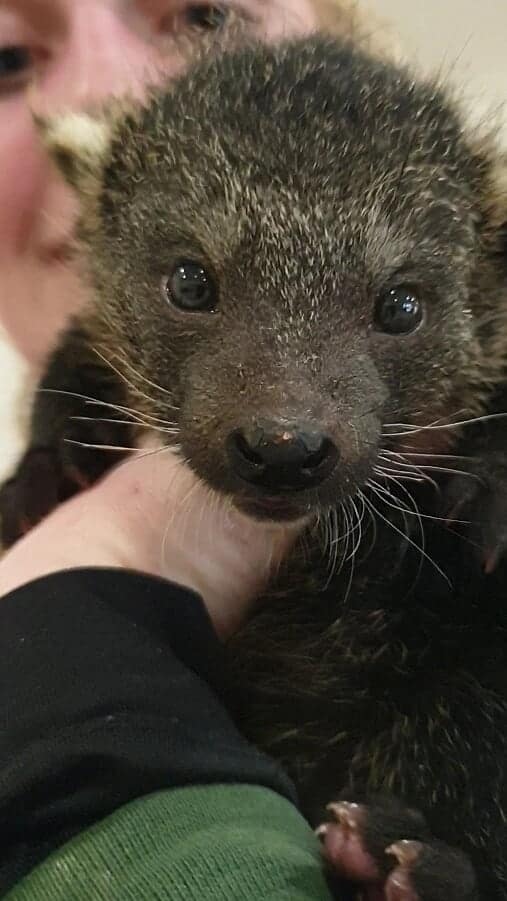
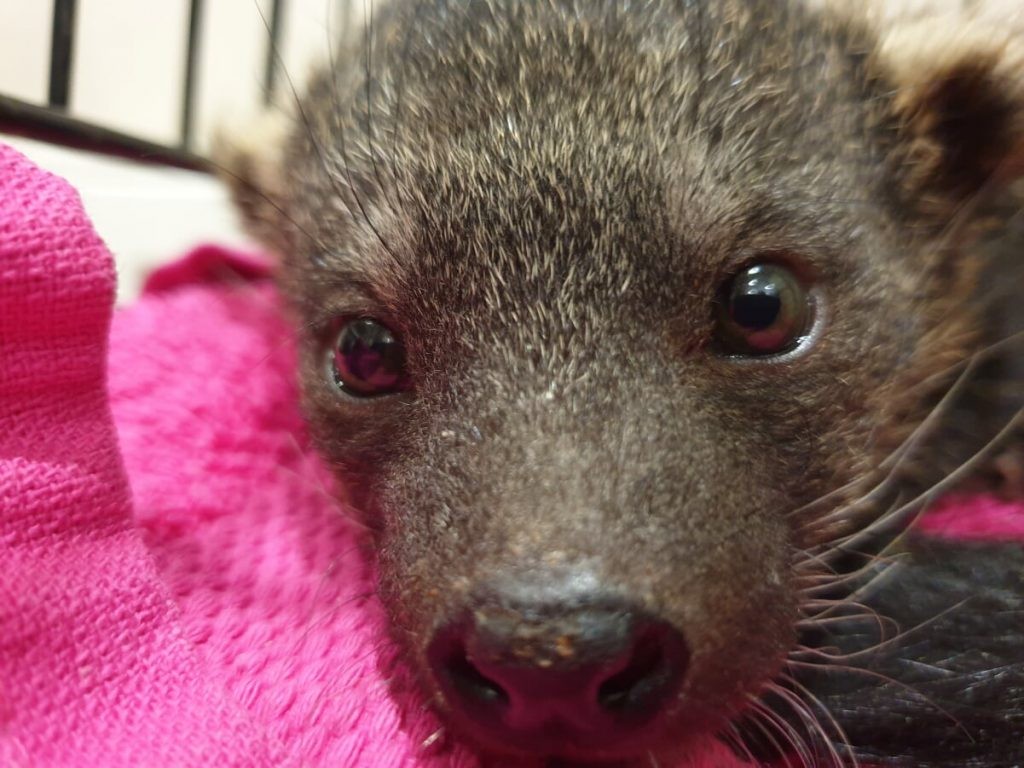
4 weeks old
As she got older, we started to decrease the amount of feeds she had throughout the day. At 4 weeks old, she was down to 4 feeds, each one of a larger volume. Another milestone was hit this week- going to the toilet on her own!
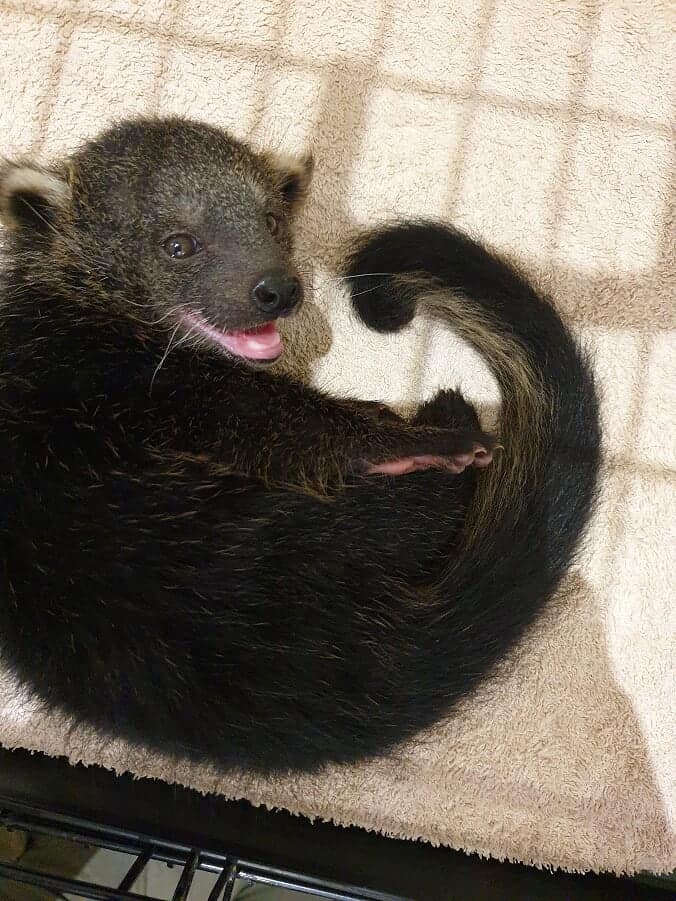
We really started to see how strong she had become; her climbing ability had come on leaps and bounds- a nightmare trying to control her while we had her out of the crate! Her little personality had started to shine through too, she was a feisty little girl put it that way.
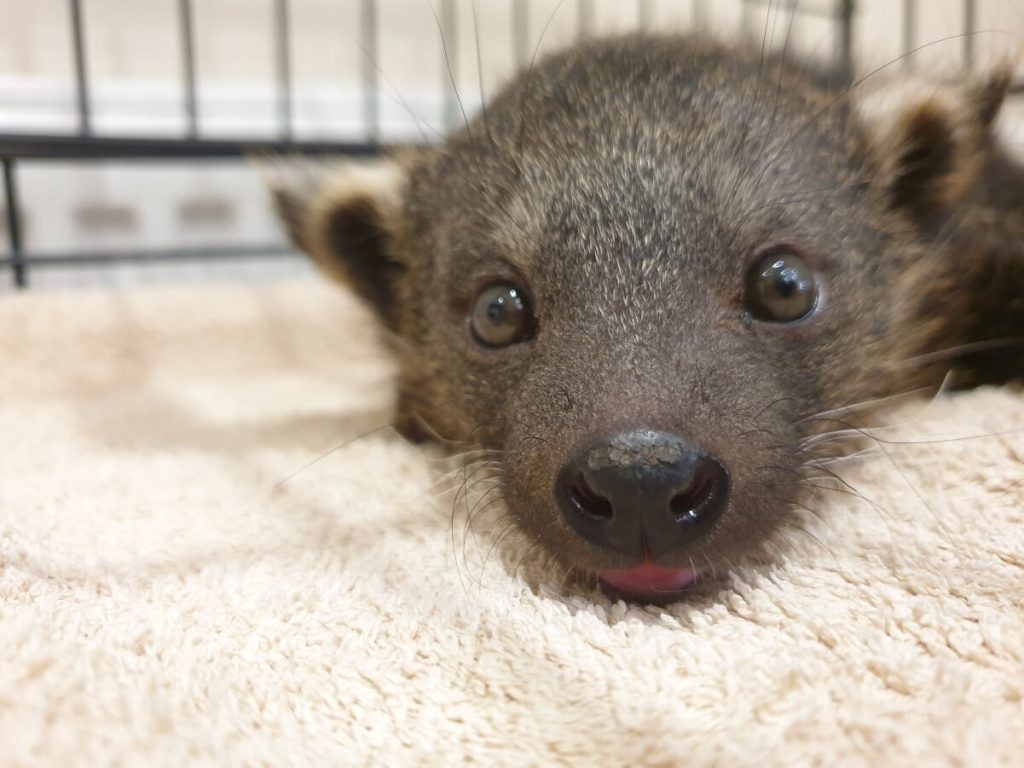
5 weeks old
The onset of her teeth (including canines by this week) meant that she should be getting some solid food, so we started to introduce a small amount of fruit mashed up into her milk at some of her feeds. This went down a treat! Banana was the first to try (by far her favourite, even now) followed by some apple and pear. Her eyesight appeared to improve dramatically this week as she seemed to focus more on us, with her gaze following us around the room constantly.
As she got older, she got more and more playful and boisterous! Climbing, playing, running, eating, pooping; all was improving. The proof was in the pudding when we weighed her at 1kg during this week- happy days!
6 weeks old
Kali was improving day by day, and she had now graduated to a taller cage allowing her to practice and improve her climbing skills. From the first day she was placed into the taller cage she loved exploring, running around and hanging from branches in it- she was very sleepy for the rest of the day.
With regards to her food, we needed to encourage her to chew her solid foods so we started to leave them in slightly larger pieces in the milk, not mashing them up into quite a paste. She adjusted perfectly.
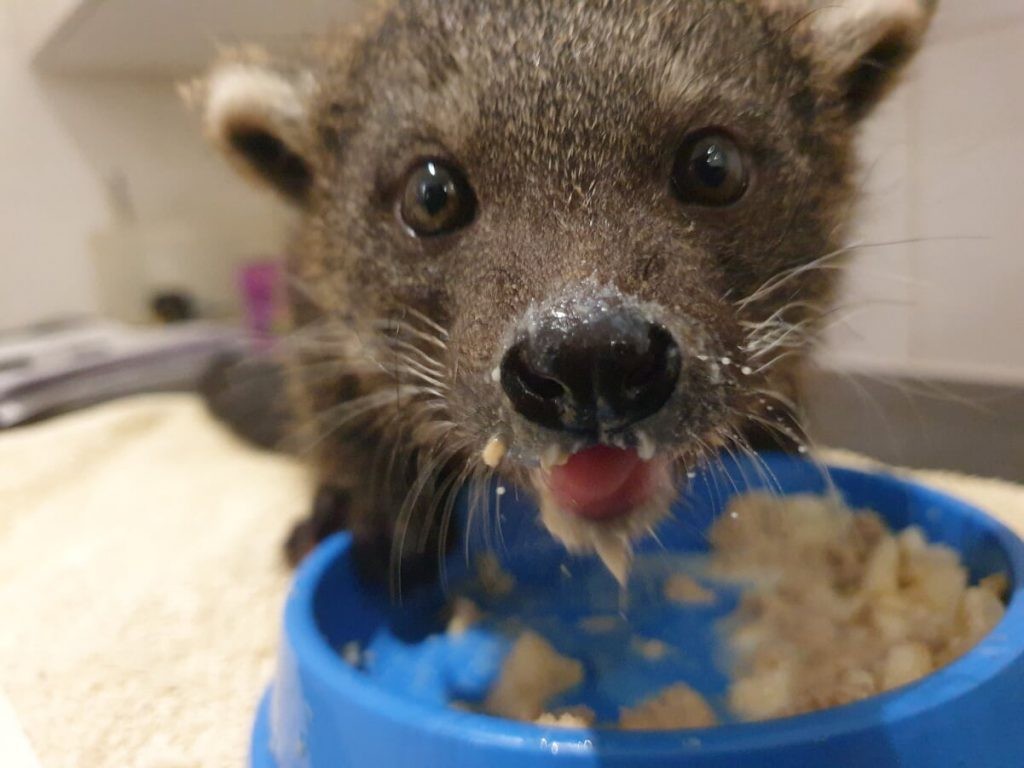
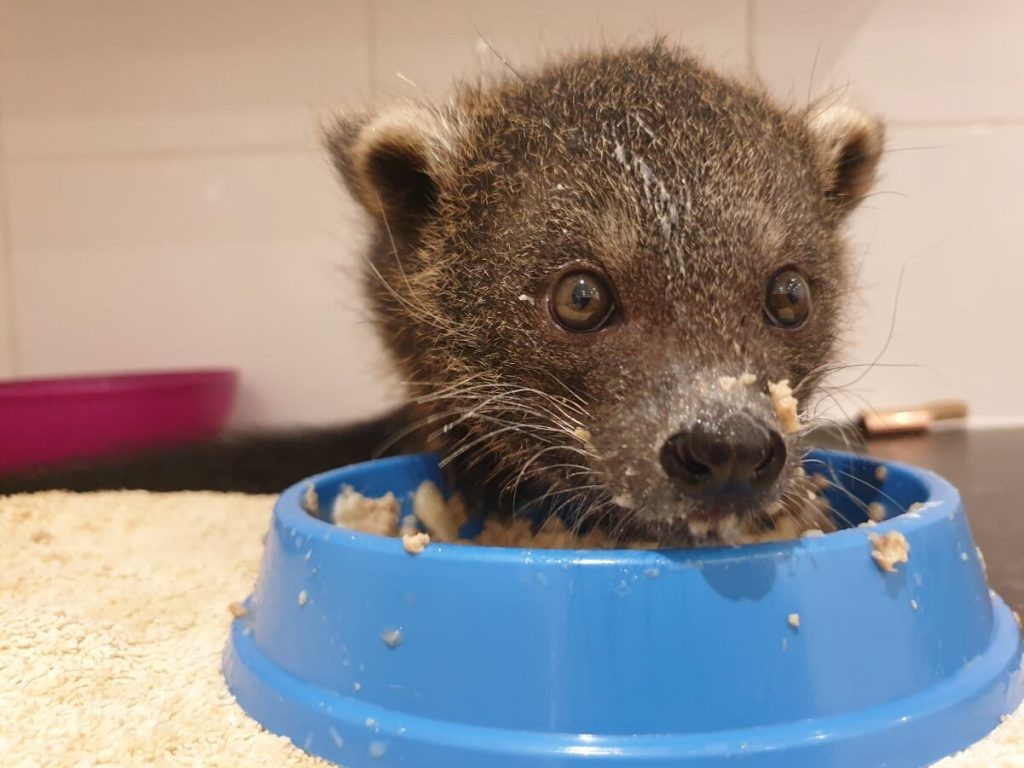
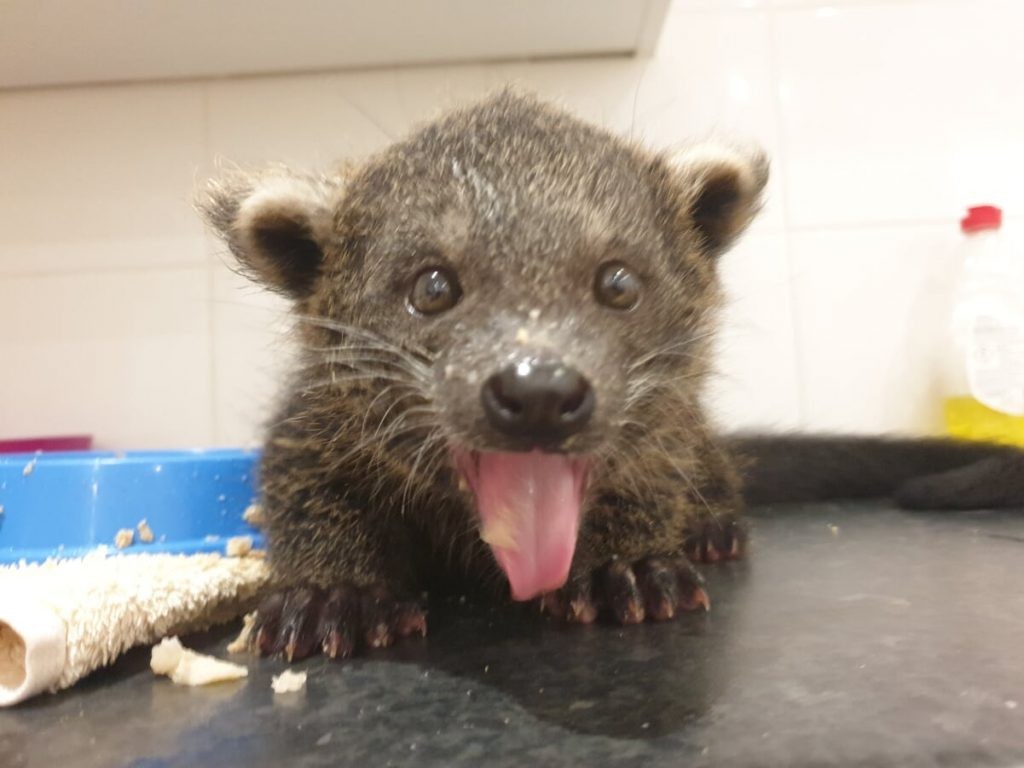
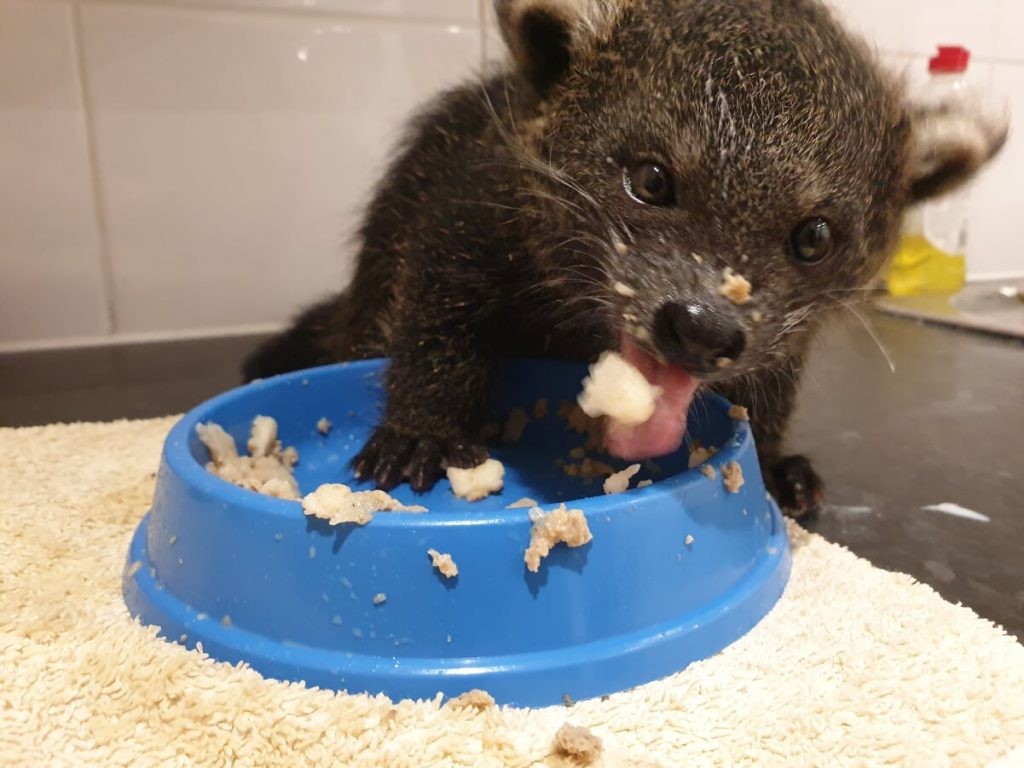
7 weeks old – Today
So, as I write this blog entry for World Binturong Day, Kali is 7 weeks old. She is growing into quite an adventurous, confident, acrobatic, lovely little creature and every day brings new excitement with her at work.
Keep an eye on our Facebook and Instagram pages and subscribe to our YouTube channel for updates on Kali and her development.


